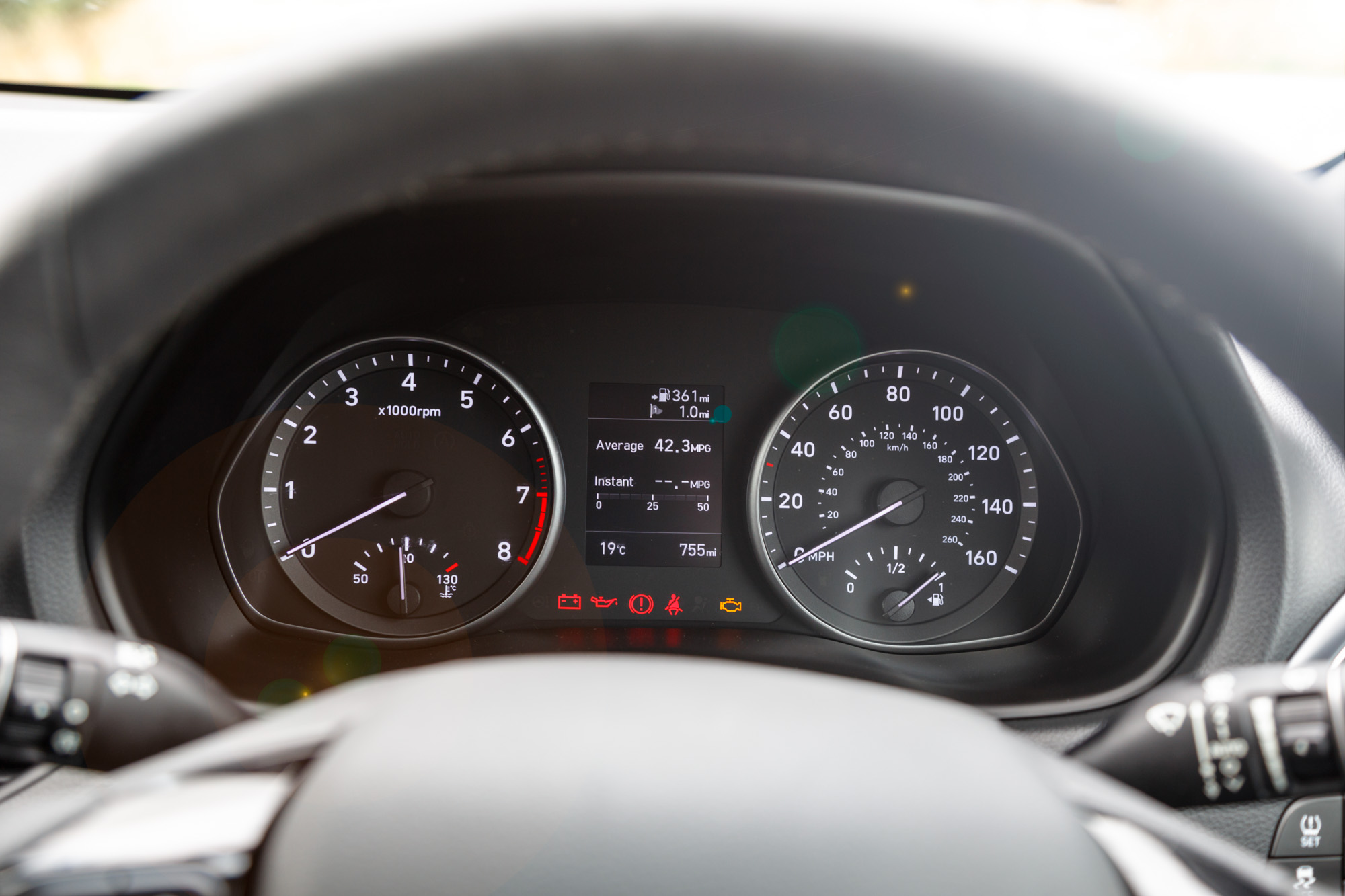A car battery light on the problem is frequently misunderstood. In an ideal world, this would just indicate a battery problem, right? But it’s not that simple. On the other hand, the automobile battery light is significant since it signifies a problem with the charging mechanism. That implies the issue could originate from your battery’s connection to the vehicle, the alternator belt, or the alternator itself.
A 12-volt battery is now found in every gasoline-powered or hybrid vehicle. The engine’s control computer, ignition system, radio, headlights, and other electrical components are all powered by this battery. As a result, the battery is crucial to the vehicle’s functionality.
A car’s 12-volt battery, like other batteries, would ultimately die if not recharged; hence it features a built-in recharging system. When the engine is operating, the alternator and voltage regulator charges the battery and gives power to the car. When needed, a conventional alternator can produce between 500 and 2,500 watts.
What Does A Car Battery Light Mean?
When your car shows a battery light on it usually signifies your battery isn’t charging properly or working properly. When the charging mechanism does not charge the battery with a voltage greater than 13.5 volts, the battery light will illuminate.
A variety of factors can cause this warning, so make sure you figure out what the problem is before you start replacing parts. It’s a good idea to get professional advice if you’re not sure what’s causing the issue.
How Does The Battery Work?
A 12-volt rechargeable battery is located under the hood of your vehicle. To start your engine, this battery provides an electrical current to the starter. The alternator provides electricity to your vehicle’s electrical system after it is started.
Alternator, which is placed next to your engine, also recharges the battery while it is operating, ensuring that the battery has enough power to start your car when it is switched off. The alternator is driven by the serpentine (or drive) belt, which is known for its long and winding look.
It keeps your alternator, power steering pump, air conditioning, and in some vehicles, your water pump running efficiently and smoothly. Fuse boxes are also included in your vehicle’s electrical system to avoid over-voltage and short-circuiting. They’re made to “blow” when a circuit’s current flow hits dangerous levels. Electrical power cannot reach devices on that circuit once the fuse has blown.
Why Is My Car’s Battery Light On?
The battery warning lights signify that the battery is in poor condition. The car battery light on while driving could be caused by a number of factors. The following are the most typical causes:
1. A Battery In Poor Condition
The first thing you should do is check to see whether the battery has a problem. It could have corroded or unclean terminals that can’t transmit electricity from the battery, or it could be a faulty cell that can’t be charged. The voltage will drop in that instance, prompting the battery light on the dashboard to illuminate.
Cleaning the terminals is the first defense line, but replacing the terminal ends is the best alternative if that fails. If your battery is dead, you should replace it to avoid future problems.
2. The Car Battery Cable Is Loose
A faulty wire can cause your car battery light on. You may have simply struck a strong bump in the road, or you may have just fitted a new battery, and the wire has become a little slack.
If you want to tighten the cable, make sure the battery cable terminal is set as far down on the battery post. And then tighten it with a wrench. The most common size for most vehicles is 10mm. To keep the cable from coming loose again, tighten the nut on each termination.
3. A Faulty Battery Cable
Another cause of the battery light on in the car is a faulty battery cable. The battery cable is responsible for transmitting power from the battery to the vehicle. If power isn’t getting to the vehicle, it’s almost certainly due to a faulty wire. Replacing the cable with a new one is an excellent option.

4. Excessive Accessory Usage
Because of the increased use of accessories, the battery can be discharged. The alternator belt, which also causes battery charging, powers the vehicle’s accessories. Using them too much might drain too much electricity, leaving the battery “hungry.”
5. Unfavorable Ground Conditions
The battery may not be able to charge if the ground strap is destroyed. As a result, the battery light remains illuminated. Furthermore, if a ground strap is loose or rusted, you will observe a subset of components in a certain location begin to act up.
6. Corrosion In The Terminals Of Batteries
If your vehicle suddenly becomes difficult to start, it’s possible that the battery terminals have rusted. When the battery terminals are corroded, they are unable to send power to the battery, or a damaged cell is unable to receive a charge. If this occurs, it will cause the battery light on.
Cleaning the terminals with a mixture of baking soda and water is the simplest way to solve this problem. Corrosion can be identified by a white-ish or crusty substance where the cables meet. If cleaning the corrosion off the battery doesn’t help, you might consider having it replaced.
7. Take A Look At The Alternator
If the battery is in good working order, you can go on to the alternator. When the engine operates, the device keeps the battery charged and gives electricity to the electrical components. A multimeter measurement of 13.6 to 14.6 volts should be found while testing the gadget. A reading of fewer than 12 volts will turn the car’s battery light on.
There are two possible causes for a failing alternator:
- A Voltage Regulator that has Failed
It’s usually due to a faulty voltage regulator that the alternator can’t deliver enough power or is completely dead at low RPM. This component may or may not be replaceable, depending on the make and model.
Installing high-wattage accessories could also cause a similar issue. If you put high-wattage headlights and rear lamps in an old car, for instance, the alternator is unlikely to be able to handle the additional load. The dashboard will display a battery light on if the car’s electrical components consume more current than the alternator can supply.
- The Alternator Belt Is Slipping
A slipping alternator belt or an almost-failed alternator is another factor that affects the regulator. It’s possible that the belt is loose, worn out, or damaged. The belt being spilled with some form of slick liquid, such as motor oil or brake fluid, is an unusual but not unknown cause.
When the car is at a standstill, quickly turn the engine. If you hear a screeching noise, it’s almost certainly due to a slipping belt. The slack belt should be tightened or replaced if it is beyond repair.
A defective alternator will not only cause the car’s battery light on, but it will also interfere with the functions of a few other vital components, including the headlights and ignition system. In this circumstance, immediate intervention is essential because a delay will result in the car becoming dead at some time.
8. Cold Cranks In The Winter
If the weather is cooler than typical, you might discover that your vehicle starts up more harshly than usual. When you try to start a car with a battery with fewer cold cranks than the vehicle’s requirements, it will show battery light on.
When someone buys a battery to be installed, this is a regular occurrence because cars with larger engine variations require a greater cold crank rating for winter starters.
9. Wiring Issues
There’s a risk that the cables connecting to the battery terminals are bad, as mentioned in a prior cause of why the battery light on. This could be due to a variety of factors, including the previously mentioned paint covering the terminals or poor wiring.
As a result, some car manufacturers will prioritize appearance over functionality. In this scenario, using sandpaper to sand down the connections will reveal enough of the metallic terminals to allow you to re-hook the wiring.

10. Pulley For Alternator Is Worn
This is a defect that infrequently occurs in most cars but frequently in German ones. Some of these alternators include a specific pulley that can only rotate in one direction. While this design is excellent for preventing alternator damage, it can be an inconvenient issue when it fails.
11. Dash Cluster Failure
Despite the fact that this is on the more infrequent end of the list, it occurs frequently enough to be included. You’ll usually notice other flaws with a malfunctioning dash cluster, such as inaccurate odometer readings or other illumination lights that aren’t supposed to be on, and vice versa.
You’ll almost always need to have your dash cluster bench tested by a professional to figure out if it’s broken or not.
12. Keep The Radio Turned On
While waiting in the car and the engine is not running, some individuals listen to their car stereo. This is surely not a problem if you do it for 10 minutes. However, if you do this for an extended period, the battery may be depleted.
Steps For Fixing The Car Battery On
To begin, turn off all electrical components in your vehicle, such as the radio, the HVAC system, disable power windows, unplug your phone from the car charger, and so on. When your dashboard shows the car’s battery light on, your car’s engine may turn off in the next few minutes as the battery isn’t charging anymore.
This step ensures that you have enough battery power to get to a workshop, your home, or a public spot to remedy the problem.

Because starting your car’s engine requires a lot of electricity, you must make sure you don’t turn it off until you’ve arrived at an excellent location where you can comfortably correct the problem. Then, do the following as soon as you get to a safe location to diagnose and remedy the problem.
1. Examine The Battery
Inspect the battery and look for any signs of corrosion or damage to the terminals. If there is any corrosion, find a way to clean it; double-check that the clamps are securely fastened to the battery terminal.
2. Look At The Alternator
Check for any loose connections or missing components that connect to your vehicle’s alternator. If you notice a loose connection, make sure to tighten it properly.
3. Take Note Of The Fuse
The fuses may or may not cause problems with your vehicle’s battery charging system. There could, however, be a blown fuse between the battery and the alternator. This issue can cause the car’s battery light on. After that, you may wish to check for a broken serpentine belt and replace it if necessary.
4. Perform A Battery Test On Your Vehicle
After inspecting your car’s battery and other connecting components to determine if there are any loose connections or other defects that could be causing the battery light on, test the battery by starting the engine to see if the light illuminates again. If it doesn’t, you’ve solved the problem; if it does, your car’s alternator is most likely the source of the problem.
Make an appointment with a mechanic to have it fixed.
Can You Drive With The Battery Light On In Your Car?
“Yes,” is the short response to this question. “Probably not for long,” is the complete statement. When your car shows a battery light on, it usually implies that something stops the electric system from charging the battery. The car is now running only on battery power.
If your car’s battery light on while it’s running, don’t expect to be able to drive it very far. Consider it as if you were unplugging your phone from the electrical charger. Your phone will stay fully charged indefinitely if you keep it plugged in. If you unplug it, you’ll be on battery power. Your phone is likely to be deactivated after a day.
The exact amount of time your car can run with the battery light on varies on a number of things. But assuming the alternator is the problem (which is the most common), your car will most certainly lose battery power after 30 minutes to an hour of driving.
This is roughly how long most car batteries take to drain to the point where the ignition system can no longer keep the vehicle running completely. Of course, this is dependent on your battery and vehicle, with some vehicles lasting longer and others dying sooner.
Other indicators of a problem with your car’s electrical system include windows that won’t roll up or down or a radio that won’t turn on if your car has power windows. You can also have issues with your headlights or climate control.
What Is The Severity Of This Problem?
If your car shows battery light on, you only have a certain amount of emergency driving time to get your vehicle home or to a reputable local repair shop. This is due to the fact that your battery will not be able to charge properly.
If you drive with your battery light on, the car will start to lose power and run rough before stalling and not starting again.
The more electrical loads you have on your vehicle, such as headlights, heater fans, defrosters, windscreen wipers, and so on, the faster it will stall and not restart, leaving you stuck.
As a result, as soon as you see the battery light on, you should only drive a short distance to get yourself, your passengers, and your vehicle to safety.
Battery Light On – FAQs
1. Is Driving My Car With The Battery Light On Safe?
Ans: Driving your car while the battery light on is dangerous and inadvisable. The battery light is a warning light that illuminates when your car’s battery or any connected components are malfunctioning.
When your car shows battery light on, you must figure out what’s causing it and fix it as soon as possible. Otherwise, your vehicle’s battery charge may be depleted in a matter of seconds, making it impossible to restart the engine.
If you’re not careful, this flaw can leave you trapped in a location where you won’t be able to get aid quickly. Instead of risking getting stuck when you least expect it, why not take the time to figure out what’s causing your car’s battery light on and fix it?
2. Can You Drive For A Long Time With The Battery Light On?
Ans: If you’re wondering how long you can drive with the battery light on, here is a good answer. You might be able to drive your car for 15 minutes or so with the battery light on. The battery light on indicates a problem with the battery or any of the components that connect to it. As a result, after a while of driving, the car is prone to stall.
It is preferable to park your car and investigate what might be wrong or to take the vehicle to a competent auto repair shop who will investigate the problem and correct any faults detected as the cause of turning the battery light on.
3. What To Do When My Car Turns The Battery Light On?
Ans: If your car’s battery light on while you’re driving, turn off all electrical components except the headlights right away. It allows you to conserve the amount of charge left in the battery.
After that, look at the car’s battery to see if any loose connections or rusted parts could be the source of the problem.
Clean any corrosion and tighten the connections if necessary. Then, inspect the alternator for any connections that may be defective and repair them. You can also look for a blown or defective fuse that could be causing the flow of energy between the battery and the alternator to come to a halt. If this is the case, the blown fuse should be replaced.
After that, start your car and do a brief battery test. If it begins, you’ve successfully resolved the problem. If it doesn’t, you might have a faulty battery. To do a thorough inspection, you should seek the advice of an auto mechanic.
4. How Do You Know If The Problem Is With The Battery Or The Alternator?
Ans: It’s easy to tell the difference between problems with a car’s battery and those with the alternator. If your car’s engine starts and stops right away, the problem is most likely with the alternator, which is unable to keep the battery charged.
If, on the other hand, your vehicle always needs a jump start to start and won’t start on its own without one, you most likely have a dead battery that has to be replaced. As a result, you may notice that your car will show battery light on, but the alternator is charging. This is most likely because your car’s battery isn’t holding a charge.

5. Can A Blown Fuse Turn The Battery Light On?
Ans: Yes, it is possible. The electrical flow from the alternator to the battery and vice versa will be disrupted if the safety fuse blows. When the power supply between these two components is terminated, a signal is automatically sent, causing the battery light on.
When trying to figure out why your car’s battery light on, it’s advisable to determine if there’s a blown fuse. If this is the case, please replace the blown fuse as soon as possible.
Car Battery Light Facts:
- The dashboard car battery light could signal various issues from a damaged battery to a glitch in the alternator.
- An illuminated battery light means there’s a battery charging problem, and the car isn’t getting enough voltage to operate properly.
- If the battery light comes on when you start the car, it’s normal, and the light will turn off after a few seconds.
- If the light stays on while driving, it could indicate a weak battery charge or other problems with the battery or the car’s electric charging system.
- A loose or corroded battery cable, damaged cells or plates inside the battery, or faulty wiring can trigger the battery light.
- Troubleshooting tips for the battery light include checking for corrosion, cleaning the battery terminals, and tightening cable clamps.
- Corrosion can interfere with the conduction of electricity from the battery to the rest of the car, so it’s essential to clean the battery terminals.
- Tightening cable clamps may help if the battery light comes on due to weak connections between the battery and cables.
- If the battery light is still on after troubleshooting, the issue could be a mechanical problem, such as a faulty alternator or voltage regulator, or a systematic like faulty wiring.
- Regular maintenance of the car’s battery and electrical system can help prevent issues with the battery light and ensure the car operates correctly.
Battery Light On – Final Verdict:
As a car owner, you must become familiar with the many lights on your dashboard and their various meanings. Some car lights turn on and stay on for days, even weeks, before the real defect that the light was indicating manifests.
When your car shows battery light on, it’s an experience you shouldn’t take lightly. Unlike some other light signals whose effects may take some time to manifest. If your car’s battery light on the dash illuminates, the genuine problem will manifest itself within minutes by stalling your car’s engine or battery not charging. This predicament can sometimes leave you stranded until aid arrives.
It’s critical to comprehend the meaning of your car’s battery light and how to resolve the problem. It’s crucial to have your battery tested on a regular basis to avoid being caught off guard by a problem like this.

